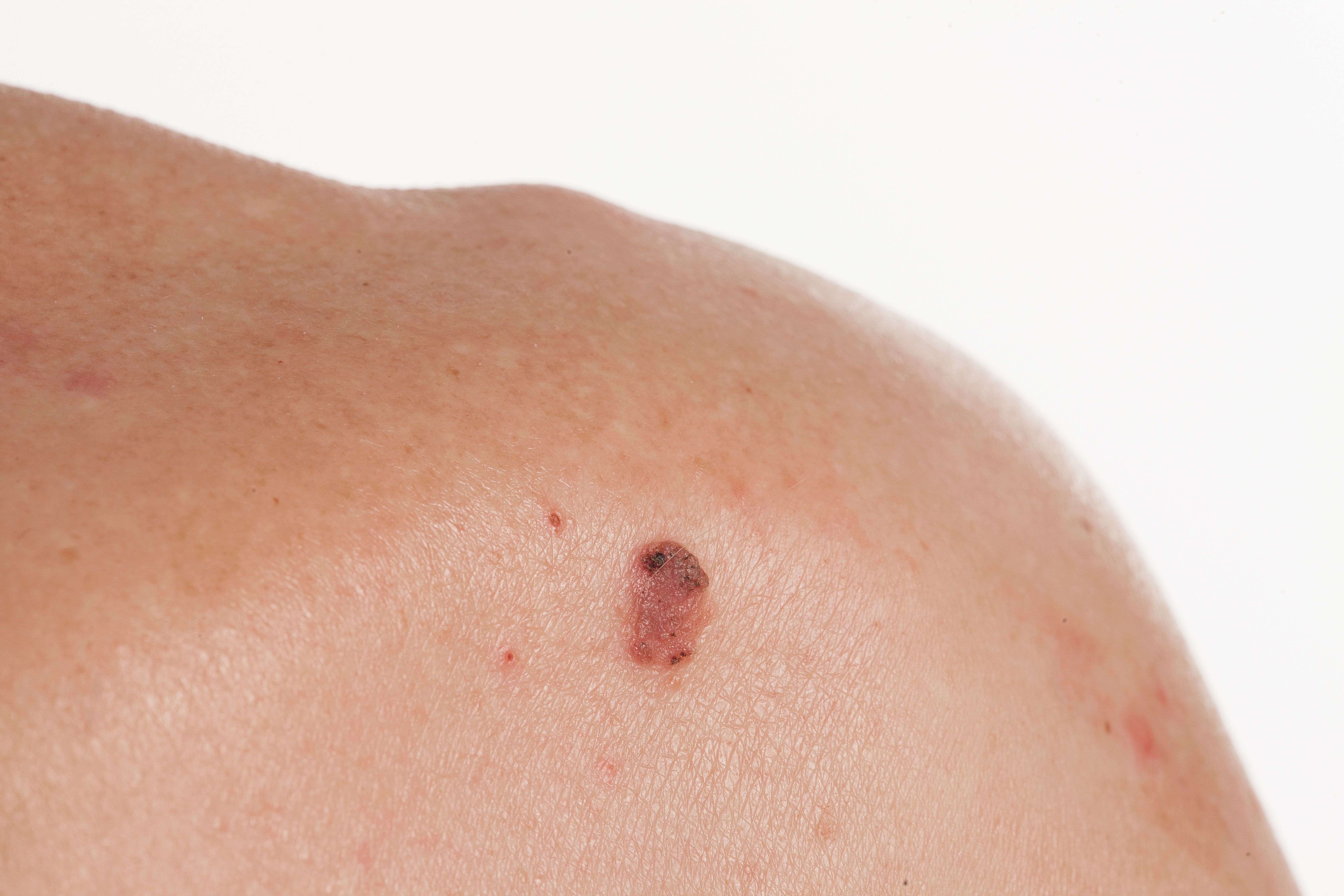- Acne
- Actinic Keratosis
- Aesthetics
- Alopecia
- Atopic Dermatitis
- Buy-and-Bill
- COVID-19
- Case-Based Roundtable
- Chronic Hand Eczema
- Chronic Spontaneous Urticaria
- Drug Watch
- Eczema
- General Dermatology
- Hidradenitis Suppurativa
- Melasma
- NP and PA
- Pediatric Dermatology
- Pigmentary Disorders
- Practice Management
- Precision Medicine and Biologics
- Prurigo Nodularis
- Psoriasis
- Psoriatic Arthritis
- Rare Disease
- Rosacea
- Skin Cancer
- Vitiligo
- Wound Care
Article
Immunosuppression Linked to Increased Mortality Risk in Squamous Cell Carcinoma
Author(s):
Patients with squamous cell carcinoma who experience immunosuppression are at a greater risk.
Immunosuppressed patients with cutaneous squamous cell carcinoma (cSCC) are at a 2 times greater risk of death caused by the disease and a 2.5 times greater risk of mortality than non-immunosuppressed patients, according to a poster presentation from the American Academy of Dermatology (AAD) Annual Meeting.1
2707195204/Adobe Stock

The study found that prior immunosuppression was also linked to younger age groups and severity of a cSCC tumor. Additionally, immunosuppressed patients disproportionately had tumors that were further progressed in terms of stage and size.
“To date, studies have focused on outcomes in primarily solid organ transplant recipients (sOTRs),” study authors wrote. “We present an analysis of a large cohort of immunosuppressed (IS) and immunocompetent (IC) patients with further stratification by various immunosuppression types.”
According to study authors, immunosuppressed patients are already facing an increased cSCC incidence rate. Other risk factors for cSCC include age, prior history of skin cancer, sex (male), and ultraviolet exposure.
Study authors compiled data from Mayo Clinic’s retrospective database from 1999 to 2016. Of study participants (n=935), 182 were immunosuppressed prior to their cSCC diagnosis, and 753 were not. Included in the data were 77.2% initial biopsy cases and 22.8% instances requiring subsequent tumor removal.
The authors analyzed data by participants’ immunosuppression status and type of immunosuppression. Within each analysis, study authors also analyzed several factors, including recurrence cumulative incidence function (CIF), metastasis CIF, cSSC-specific death rates CIF, and overall patient survival rates.
From the analysis, study authors noted demographic, tumor characteristic, and clinical outcome results.
“Immunocompromised status was predictive of lower overall survival and increased cSCC-specific death,” study authors wrote. “Immunosuppression was significantly associated with higher grade tumors, but other tumor features did not demonstrate significant differences based on immune status.”
Study authors also noted that incidences such as metastasis and recurrence were not statistically significant. They said this could have been due to the study’s lack of statically significant factors, such as a tumor’s progression, depth, and stage.
“Current staging systems such as the BWH and AJCC do not include immunosuppression as a distinct risk factor. Our cohort demonstrated a significant difference in outcomes, despite no meaningful differences in staging between the IS and IC cohorts," study authors wrote. “Our study highlights the critical need for improved staging systems to accurately identify high-risk tumors in IS [immunosuppressed] patients.”
Reference
- Greene A, Boudreaux B, Bhullar P, et al. Tumor characteristics and clinical outcomes for cutaneous squamous cell carcinoma in immunosuppressed patients. Presented at the 2023 American Academy of Dermatology Annual Meeting; March 17-21, 2023; New Orleans, LA. Accessed March 17, 2023. https://aad-eposters.s3.amazonaws.com/AM2023/poster/43077/Tumor+Characteristics+and+Clinical+Outcomes+for+Cutaneous+Squamous+Cell+Carcinoma+in+Immunosuppressed+Patients.pdf
Newsletter
Like what you’re reading? Subscribe to Dermatology Times for weekly updates on therapies, innovations, and real-world practice tips.















